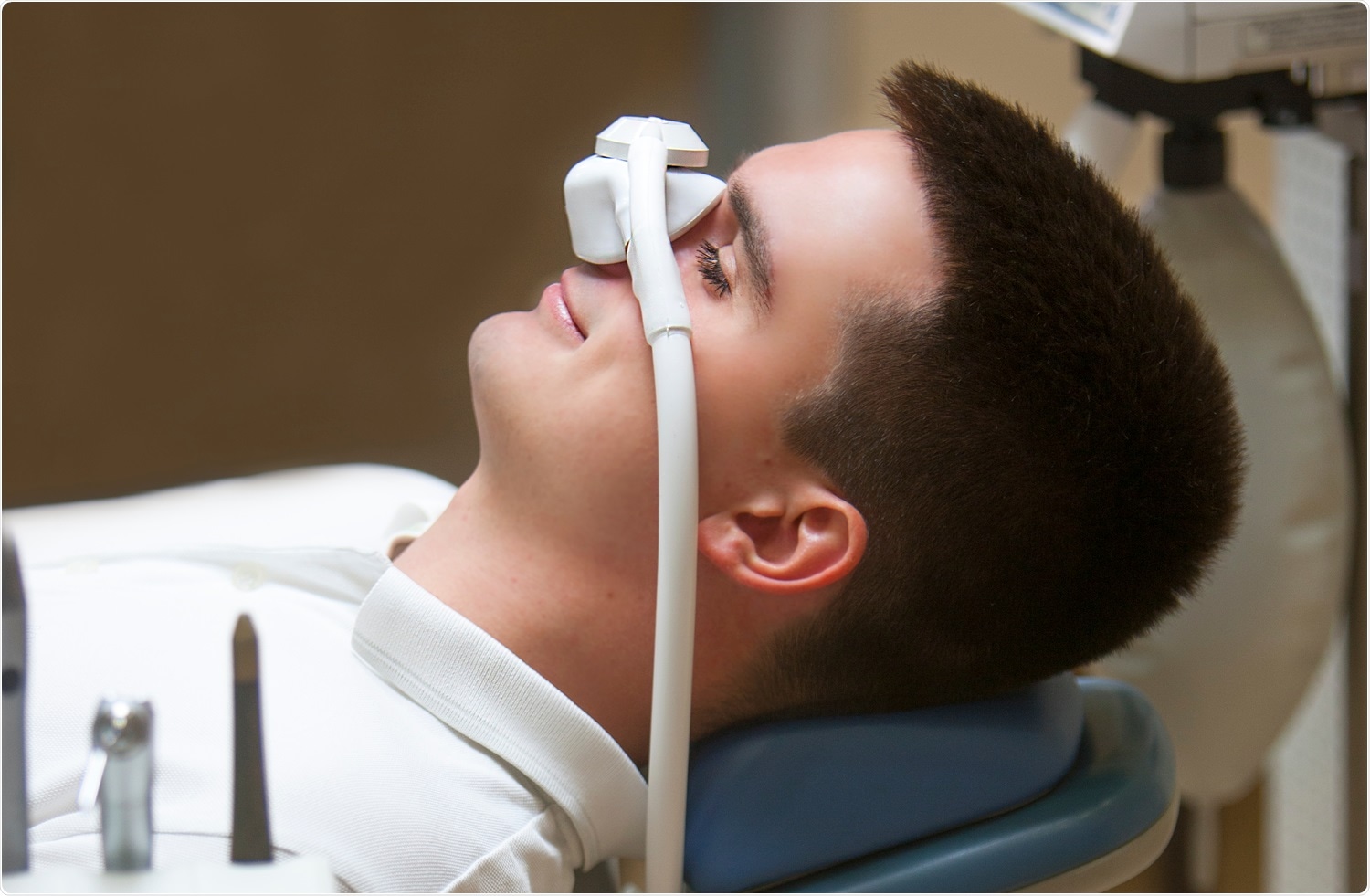Treatment-resistant depression relieved by laughing gas

Depression is a common mental health disorder, with more than 264 million people diagnosed. The World Health Organization (WHO) reports that depression is a leading cause of disability worldwide and is a significant contributor to the overall global burden of disease.
Medicines and therapies can be used to treat the condition. People can, however, develop treatment-resistant depression. Symptoms of the mental health condition may become challenging to control.
Researchers at the Washington University School of Medicine in St. Louis and the University of Chicago have found that a single, one-hour treatment involving the inhalation of a mixture of oxygen and the anesthetic drug nitrous oxide, also known as laughing gas, can improve symptoms of depression in people resistant to treatment.
"A large percentage of patients don't respond to standard antidepressant therapies — the patients in this study had failed an average of 4.5 antidepressant trials — and it's very important to find therapies to help these patients," said Charles R. Conway, MD, a professor of psychiatry at Washington University and one of the study's senior investigators. "That we saw rapid improvements in many such patients in the study suggests nitrous oxide may help people with really severe, resistant depression."
The phase II clinical trial results, published in the journal Science Translational Medicine, studied the effects of a nitrous oxide treatment on depression. The team also noted that a 25-percent concentration of nitrous oxide provides similar efficacy while reducing the risk of adverse effects compared with the 50 percent concentration.

Nitrous oxide and depression
Ketamine inhibits NMDA-receptors and has shown promise as a rapid antidepressant, even in patients with treatment resistance. Ketamine's immediate antidepressant efficacy has started the search for alternative drugs that act through a similar mechanism. Since ketamine may have long-term health effects, such as memory impairment and psychosis, scientists are searching for effective alternatives.
Nitrous oxide is a gas administered through inhalation and has been used in anesthesiology. It is colorless and nearly odorless and considered one of the weakest anesthetic drugs available.
Also known as laughing gas, it has shown promise as a treatment for depression. It can give a short boost to the mood as well as pain relief. However, past evidence shows that the effect wears off quickly.
The gas affects the brain by blocking molecules on nerve cells known as N-methyl-D-aspartate (NMDA) receptors. Glutamatergic signaling, of which NMDA-receptors are an essential component, is the pathogenesis of mood disorders and their potential treatment.
However, nitrous oxide also has inhibitory effects on non-NMDA-glutamate receptors, low voltage-activated calcium channels, and specific nicotinic acetylcholine receptors.
There is still limited data and studies exploring the effect of nitrous oxide on mood disorders, including depression. Most of these studies looked at its impact on treatment-resistant major depression.
The phase II clinical trial
The study's primary goal was to determine whether a lower dose of nitrous oxide might be just as effective as doses tested in the past and how long the relief lasted.
The team enrolled 24 patients, and each one received three treatments about one month apart. They inhaled 50-percent nitrous oxide and 50-percent oxygen concentration gas for an hour in the first session. The second treatment involved inhaling a solution that was 25-percent nitrous oxide, while the last treatment involved breathing only oxygen without nitrous oxide.
Aside from that, the team continued to observe the participants for two weeks to determine how long the treatment will last.
The nitrous oxide significantly improved depressive symptoms versus the placebo group that received only oxygen. Meanwhile, there was no difference between the 50-percent nitrous oxide and the 25-percent nitrous oxide solutions in terms of efficacy in 17 of the study participants. The only difference involved how long the antidepressant effect lasted.
The 50-percent solution had more excellent antidepressant effects two weeks after the treatment, while the 25-percent dose was associated with lesser adverse effects. The most commonly reported one is nausea.
The team concluded that of the 20 people who completed the study's full treatments, 55 percent experienced a marked improvement in at least half of the depressive symptoms. In addition, about 50 percent were considered in remission, wherein they were no longer clinically depressed after breathing nitrous oxide solution for one hour.
"These results suggest that 25% nitrous oxide has comparable efficacy to 50% nitrous oxide in improving TRMD but with a markedly lower rate of adverse effects," the researchers concluded in the phase II trial.
The researchers also noted one potential advantage in using nitrous oxide.
"It's a volatile gas, and its anesthetic effects subside very quickly. It's similar to what happens in a dentist's office when people drive themselves home after getting a tooth pulled. After treatment with ketamine, patients need to be observed for two hours following treatment to make sure they are OK. Then they have to get someone else to drive them," Dr. Conway explained.
- Nagele, P., Palanca, B., Gott, B., Conway, C. et al. (2021). A phase 2 trial of inhaled nitrous oxide for treatment-resistant major depression. Nature Translational Medicine. https://stm.sciencemag.org/content/13/597/eabe1376
Posted in: Men's Health News | Medical Research News | Medical Condition News | Women's Health News
Tags: Anesthesiology, Antidepressant, Brain, Breathing, Calcium, Clinical Trial, Depression, Disability, Drugs, Efficacy, Ketamine, Medicine, Mental Health, Nausea, Nerve, Nitrous Oxide, Oxygen, Pain, Placebo, Psychiatry, Psychosis

Written by
Angela Betsaida B. Laguipo
Angela is a nurse by profession and a writer by heart. She graduated with honors (Cum Laude) for her Bachelor of Nursing degree at the University of Baguio, Philippines. She is currently completing her Master's Degree where she specialized in Maternal and Child Nursing and worked as a clinical instructor and educator in the School of Nursing at the University of Baguio.
Source: Read Full Article